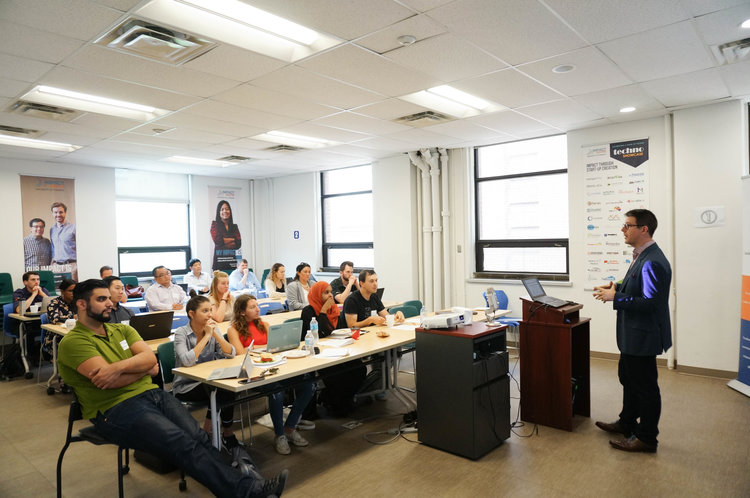On June 26th, OBIO hosted ‘Building Your Early-Stage Strategy Toolbox’ featuring sessions on formulating a non-dilutive fundraising strategy, early-stage business strategies, and preparing investor materials.
John McGraw, President of Spratley Advisors, presented on business strategies for early-stage health science companies. In his talk, he highlighted six value creation steps in formulating business strategies.
John discussed how to coordinate business activities, including the impact of IP, quality and regulatory, and how to manage this with a limited budget. He advised the audience to develop their strategy by starting at the end (the desired product label/features) and then figuring out each of the steps to get there. John emphasized that the entrepreneur should focus on the steps that add value.
This starts with defining your customers, understanding who they are and how they make decisions. Think about how they will influence the decision-making process and how they may aid in the distribution of the product. For example, John noted the following ranking criteria used by doctors in terms of making decisions about pharmaceutical products:
Efficacy
Safety
Tolerability
Route of administration (with oral being the most preferred route and with injection being the least preferred route)
Price
While in diagnostics, the following criteria are used by doctors:
False positive/negative rate
Seriousness of result
Risk/safety
Follow-on test
Interventional step
Cost
These criteria will allow the entrepreneur to identify what the critical features of the product should be. A drug with equivalent efficacy and superior safety, or superior efficacy with worse tolerability, is much more likely to be successful than one with worse efficacy and better tolerability.
Once the product profile is determined, start working backwards and think about manufacturing and distribution because they can significantly impact your market. Consider the constraints, workflow, supply chain, regulatory issues per country, and how these changes will affect the market.
John’s full presentation including the three other value creation steps he discussed will be available for OBIO Members on the OBIO website.
Sean Peel, Director Program Development at OBIO, presented on what needs to be addressed in investor materials that are important for early stage companies, and talked about five critical considerations in preparing a business plan.
He noted that while business plans take time, professional investors, such as venture capitalists, are going to require them because they show that a company has thought deeply about developing a clear strategy to move forward, identifying the gaps in knowledge and resources, and working to mitigate risks.
Sean stressed the significance of providing a compelling value proposition that offers a significant solution to a major problem. A company may have the best science and technology, but they must be focused on solving a customer’s problem. He also emphasized that any claims about market size or product performance must be supported by data. OBIO offers great market research tools to determine market size, including the databases GlobalData and PitchBook, which are available to OBIO Members.
Next, it is important to clearly identify the customer(s), especially who will pay and who will decide and this must be validated. As part of this section, Sean discussed what early stage companies can do to identify their pathway to reimbursement.
To know more about the other considerations, details of these investor materials, and more tips, Sean’s full presentation will be made available for OBIO Members on the OBIO website.
Finally, Tyrenny Anderson, Owner of Anderson Consulting, proposed strategies in recognizing ambiguity as an opportunity for growth and creativity. Tyrenny presented different ways to develop this growth mindset.
First, Tyrenny discussed using prototyping as a means of approaching ambiguity. In this approach, you use various devices, such as storyboards, customer journey maps, and even napkin scribbles, to quickly summarize what you propose to do to be able to get feedback and confirm if you are on the correct track.
Another method is using effective questioning, by asking clarifying questions that try to get clarity on the big picture. Examples of such clarifying questions are:
“What might success look like?”
“What outcome do we want?”
“What would have to be true to ensure success?”
“Tell me more.”
Tyrenny’s full presentation will be made available for OBIO Members on the OBIO website. Tyrenny’s previous workshops, “Goal Setting & Prioritization” or “Working in Teams”, are available now on OBIO’s Member Portal (click here).
Next week, we will summarize the keynote presentation from ‘Building Your Early-Stage Strategy Toolbox’, by David Cayea, Chief Operating Officer of PlantForm Corporation, who presented on how health science companies can formulate a non-dilutive fundraising strategy. Stay tuned!



